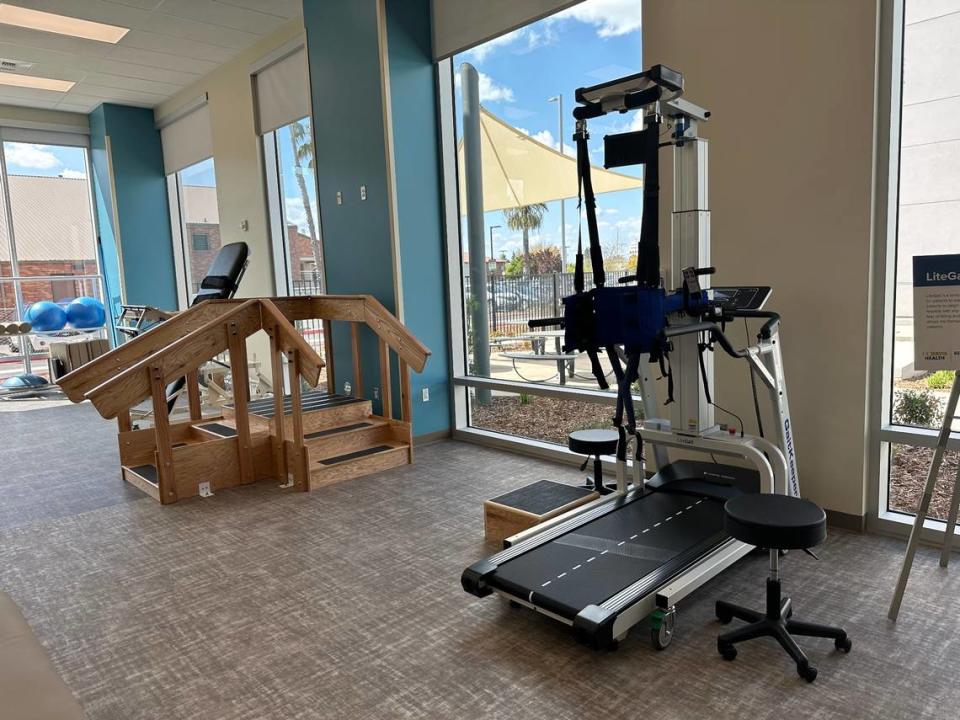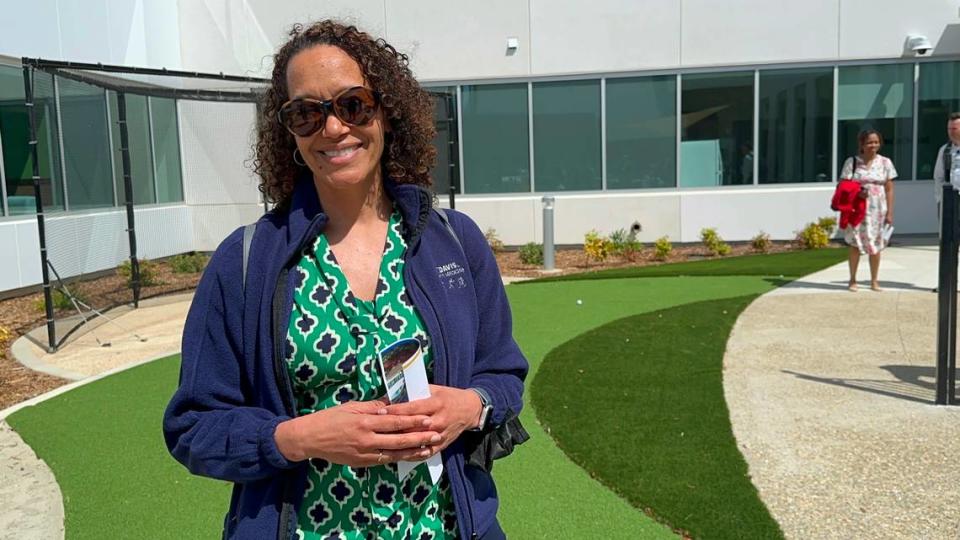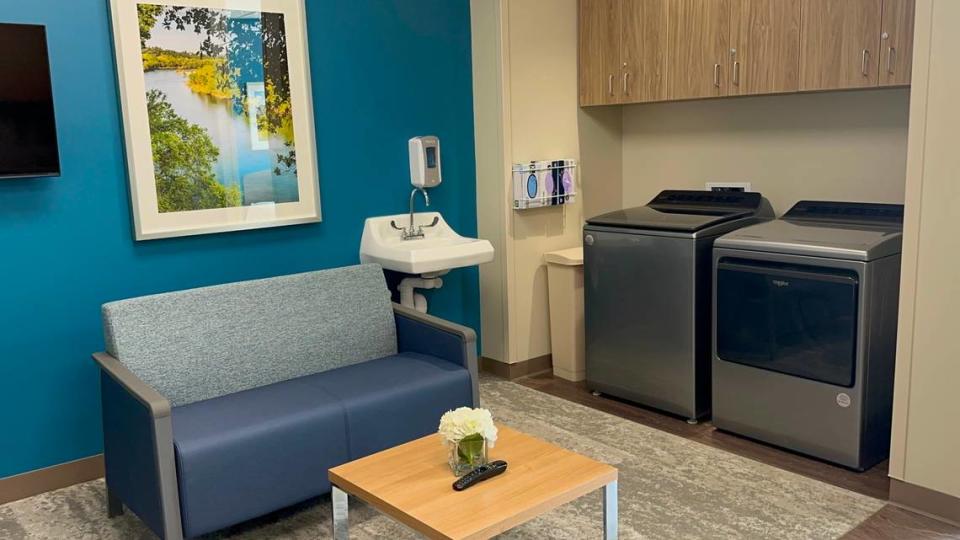It took 30-plus years to bring this UC Davis rehab hospital to Sacramento. See what it offers
Within a few days, doctors from UC Davis Health will welcome their first patients to a new $66 million rehabilitation hospital to treat people recovering from stroke or other debilitating conditions, illnesses, surgeries, and chronic medical conditions.
While the inpatient facility at 4875 Broadway bears the UCD Health name, Lifepoint Rehabilitation will own and operate it. The company, headquartered south of Nashville, Tennessee, took the reins of this joint venture in December 2021 after acquiring Kindred Healthcare, UCDH’s original partner in the project.
Lifepoint has 19 such specialty hospitals around the country, many of them in joint ventures with major hospital systems, but this is UC Davis Health’s first such partnership. Physicians and medical residents from the academic health system will practice at the rehabilitation hospital — and refer their patients there for care when appropriate.
The UC Davis Medical Center has long served as a Level 1 Trauma Center for 33 California counties, meaning that it provides the highest level of care to critically ill or injured patients, but the hospital could offer only “mediocre facilities for rehabilitation” to patients facing a long road to recovery, said Dr. David Lubarsky, the chief executive officer for UC Davis Health.

“We have ... probably the best outcomes in the country for serious trauma,” Lubarsky said. “But when we were done saving (patients’) lives, we didn’t have an equivalent rehabilitation facility to send (patients) to so that they can recover more of their lives, so that they can attain the fullest function humanly possible.”
In fact, Lubarsky said, there was no such state-of-the-art facility available to any trauma center in the region. The UC Davis Health Rehabilitation Hospital will have 52 private rooms with baths available for patients now.
This includes four bariatric rooms for obese patients with wider doors, larger beds and chairs, and ceiling lifts that can help someone weighing up to 700 pounds get in and out of bed, said Lee Montgomery, the chief nursing officer at the facility. Eight other patient rooms are also equipped with lifts, he said, and the hospital has other equipment nearby in case more support is needed.
Patients can have therapy sessions in spacious indoor and outdoor gyms with different equipment, surfaces and structures to try. Outdoors, they can tackle stairs like the ones they would face on a wooden deck or practice range of motion in an area that looks like a golf course. Indoors, computer applications will challenge them to improve balance, strength and range of motion.
“Many people really feel truly at home and fully themselves when they’re playing their most fun recreational activities, like golf, or like being able to move around in a grassy space,” said Dr. Brandee Waite, director of sports medicine at UC Davis Medical Center. “Having that motivation to be able to do the regular things that you used to do in your life and the things that you love outside of the hospital are just so motivating and to be able to get a tiny piece of that as you’re moving forward is going to be really beneficial and therapeutic for the patients.”


Lifepoint has also built a small apartment in the hospital, complete with a living room, dining area, kitchen, washer, dryer, bedroom and small bath, allowing patients to simulate real-life challenges they will encounter at home.. On a tour, when medical residents saw it, they immediately began tossing around ideas on how to use the space. The bathroom, for instance, looked roomier than the space most people would find at home, they said. Was it possible to use dividers to approximate a patient’s actually living space?
UC Davis Health officials said they are delighted that their patients will have access to such cheerful private rooms and expansive therapy spaces after the tight confines of their current space.
“Our patients, they’re in two-person rooms., so one patient might be in with another patient that is screaming, that has their family in at night, that has a TV on at night,” said Dr. John Dorsett, the medical director for UCDH Inpatient Rehabilitation and for the new rehabilitation hospital. “We go in and round on them in the morning, and they’re extremely exhausted.”
In the medical center, patients with brain injuries have to get in an elevator and travel down six floors to the bowels of the hospital, making their way over cracked concrete floors to get to a gym, but in the new hospital, brain-injured patients have a quiet designated gym and secure unit.
Showering will be much less of a chore for patients, who in the medical center must travel down the hall to the two showers designated for rehabilitation patients, Dorsett said.
“We’ll be rounding in the morning,” he said, “and there’ll be a patient that will be strolling along in their shower chair, piled up with towels, going down to the shower, passing the nurse’s station,” he said. “Now they will have their own private bathrooms that have their own private showers. They’ll be able to have a little bit of dignity when they’re going through their showering with the therapist in the morning.”
Dr. Craig McDonald, chair of the Department of Physical Medicine and Rehabilitation at UC Davis Health, said they have been working for more than 30 years to try and get a state-of-the-heart rehabilitation hospital.
The dream has become a reality now, in part, because the rehabilitation department sits in a portion of the medical center that will be out of compliance with seismic standards. By 2030, hospital buildings must be able to remain fully operational and capable of providing services after an earthquake.
While relocation was inevitable, the building of a separate hospital was anything but assured since it had been put off for decades. McDonald credited Lubarsky and UC Davis Chancellor Gary May for getting the project across the finish line.
The project, announced in 2018, is the first structure that the University of California, Davis, has completed as part of its ambitious Aggie Square innovation hub. The university’s Sacramento campus is exploding with construction activity: The medical center recently completed the Tschannen Eye Institute and is in the midst of building an outpatient surgery center, a new hospital tower and a parking structure. Closer to the rehabilitation hospital, two buildings are rising at Aggie Square with plenty of space to rent to technology start-ups.

